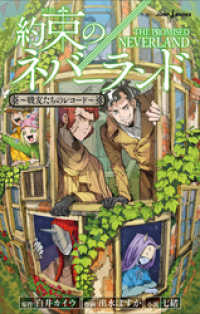Full Description
There is a clear and pressing need for collective action to develop alternative approaches to the way we organize our activities. This necessity implies the development of a robust theory that outlines a potential, attainable, and desirable future, which is embedded in the inherent contradictions of the present. Cultural-Historical Activity Theory represents such a strong interventionist theory.
The initial section of this publication outlines the evolution of this theory, from its origins in the work of 20th-century Soviet psychologists to its more recent developments. The second part of the book provides insight into the key concepts and their application in research. The third part of this book describes the potential for intervention aimed at transforming activity systems. It also explains the methodological principles of formative intervention and the change laboratory.
Contents
Part 1: Four Generations of Cultural-Historical Activity Theory
Introduction unity and diversity of cultural - Historical activity theory - The first generation of chat and the Vygotskian revolution - The second generation of chat: Leontiev's work - Third generation of chat: From the development of mind to the development of activity In Engeström work - Towards a fourth generation of chat? Sannino and real Utopias.
Part 2: Four Central Concepts for Analyzing Activity
The concept of Contradiction - Expansive Learning. Learning what is not yet there - Development as Qualitative Reorganization.
Part 3: The Interventionist Dimension of Chat: Formative Intervention And Change Laboratory
The Change Laboratory Methodology - Formative Interventions In relation to other Interventionist approaches.
-

- 電子書籍
- 陰キャ男子が経験した、羨まけしからんな…
-

- 電子書籍
- 捨てられる日本 世界3大投資家が見通す…
-

- 電子書籍
- 境界迷宮と異界の魔術師 8 ガルドコミ…
-

- 電子書籍
- 約束のネバーランド ~戦友たちのレコー…




